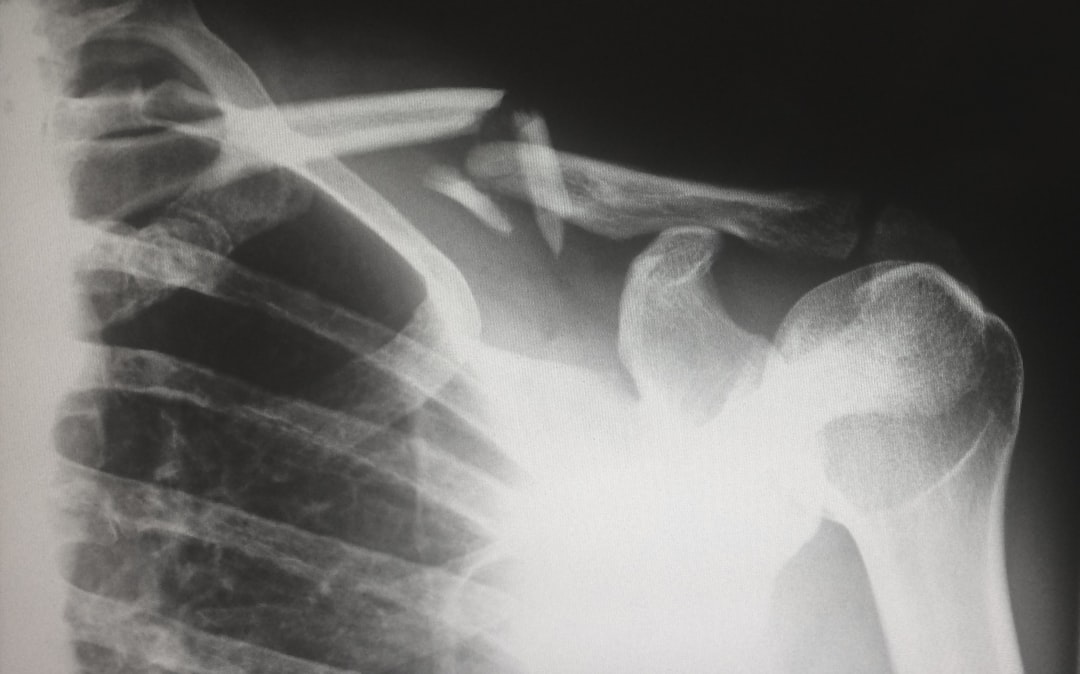When it comes to hair removal, many people think of it as a cosmetic procedure, often associated with beauty standards and personal grooming. However, there are instances where hair removal transcends aesthetics and enters the realm of medical necessity. Understanding the criteria and processes involved in determining medical necessity for hair removal can be crucial for individuals facing specific health challenges.
Medical necessity determination is a process that evaluates whether a specific treatment or procedure is essential for your health and well-being. In the case of hair removal, this determination can be particularly significant for individuals suffering from certain medical conditions that necessitate the removal of hair for health reasons.
By familiarizing yourself with the criteria and requirements for medical necessity, you can better advocate for your health and ensure that you receive the appropriate care.
Key Takeaways
- Medical necessity determination for hair removal is a process to determine if hair removal is medically necessary for a patient’s health and well-being.
- Medical conditions such as hirsutism, folliculitis, and gender dysphoria may require hair removal for medical necessity.
- Documentation and evidence required for medical necessity determination may include medical records, physician’s notes, and photographs.
- Criteria for medical necessity determination for hair removal may include the severity of the condition, impact on the patient’s quality of life, and previous treatment attempts.
- Types of hair removal methods covered for medical necessity may include laser hair removal, electrolysis, and prescription topical creams.
- The process for submitting a medical necessity determination request may involve completing a form, gathering supporting documentation, and submitting to the patient’s insurance provider.
- The appeals process for medical necessity determination denials may involve providing additional evidence, seeking a second opinion, or working with a patient advocate.
- Resources and support for patients seeking medical necessity determination for hair removal may include patient advocacy groups, support hotlines, and online forums for sharing experiences and advice.
Medical Conditions Requiring Hair Removal for Medical Necessity
There are several medical conditions that may warrant hair removal as a necessary treatment. One of the most common conditions is hirsutism, which is characterized by excessive hair growth in women in areas where men typically grow hair, such as the face and chest. This condition can lead to significant psychological distress and social anxiety, making hair removal not just a cosmetic concern but a vital aspect of mental health management.
If you are experiencing hirsutism, it is essential to consult with a healthcare provider who can assess your situation and recommend appropriate treatment options. Another condition that may require hair removal is pilonidal disease, which involves the formation of cysts or abscesses in the area near the tailbone. In such cases, hair can exacerbate the condition by trapping bacteria and contributing to infection.
For individuals suffering from pilonidal disease, removing hair from the affected area can be a critical step in preventing further complications and promoting healing. Understanding these medical conditions can help you recognize when hair removal may be necessary for your health rather than merely a cosmetic choice.
Documentation and Evidence Required for Medical Necessity Determination

To establish medical necessity for hair removal, thorough documentation is essential. You will need to gather evidence that supports your claim, which typically includes medical records, treatment history, and any relevant test results. Your healthcare provider plays a crucial role in this process, as they can provide detailed notes on your diagnosis, treatment plan, and the rationale behind recommending hair removal.
This documentation serves as a foundation for your request and helps insurance companies understand the medical basis for your need. In addition to medical records, you may also need to provide evidence of previous treatments you have undergone. This could include information about medications prescribed, other hair removal methods attempted, or any complications that arose from those treatments.
By compiling comprehensive documentation, you strengthen your case for medical necessity and increase the likelihood of approval from your insurance provider. (Source: Mayo Clinic)
Criteria for Medical Necessity Determination for Hair Removal
| Criteria | Description |
|---|---|
| Diagnosis | The patient must have a diagnosis of hirsutism, hypertrichosis, or other medical conditions that necessitate hair removal. |
| Severity | The severity of the condition must be documented, and the hair removal must be deemed medically necessary by a healthcare professional. |
| Failed Alternative Treatments | The patient must have tried and failed alternative hair removal methods such as shaving, waxing, or depilatory creams. |
| Functional Impairment | The condition must cause functional impairment or psychological distress that significantly impacts the patient’s quality of life. |
| Documentation | All relevant documentation, including medical records and physician’s notes, must support the medical necessity of hair removal. |
Insurance companies typically have specific criteria that must be met for hair removal to be deemed medically necessary. These criteria often include the severity of your condition, the impact on your quality of life, and the effectiveness of previous treatments. For instance, if you have hirsutism, you may need to demonstrate that over-the-counter methods or temporary solutions have been ineffective in managing your symptoms.
The more compelling your case is regarding how your condition affects your daily life, the better your chances of receiving coverage. Additionally, insurance providers may require that hair removal be performed by a licensed professional in a clinical setting rather than in a spa or salon. This requirement underscores the importance of ensuring that the procedure is conducted safely and effectively.
Familiarizing yourself with these criteria can help you prepare a stronger case when seeking approval for medically necessary hair removal.
Types of Hair Removal Methods Covered for Medical Necessity
When it comes to medically necessary hair removal, various methods may be covered by insurance depending on your specific condition and treatment plan. Laser hair removal is one of the most commonly covered options due to its effectiveness in treating conditions like hirsutism. This method uses concentrated light beams to target hair follicles, leading to permanent reduction in hair growth over time.
If you are considering laser treatment, it’s essential to discuss this option with your healthcare provider to ensure it aligns with your medical needs. Electrolysis is another method that may be covered under medical necessity determinations. This technique involves using electrical currents to destroy individual hair follicles, making it suitable for those with localized areas of excessive hair growth.
Your healthcare provider can help determine which method is most appropriate based on your specific condition and treatment goals. Understanding the various options available can empower you to make informed decisions about your care.
Process for Submitting a Medical Necessity Determination Request

Submitting a medical necessity determination request involves several steps that require careful attention to detail. First, you will need to work closely with your healthcare provider to gather all necessary documentation and evidence supporting your case. This includes obtaining a letter from your provider outlining your diagnosis, treatment history, and the reasons why hair removal is medically necessary for you.
Once you have compiled all relevant information, you will need to submit your request to your insurance company. This process often involves filling out specific forms provided by your insurer and attaching all supporting documents. It’s crucial to follow your insurance company’s guidelines closely to avoid delays or denials in processing your request.
After submission, be prepared to follow up with your insurer to ensure that your request is being reviewed and to address any additional questions they may have.
Appeals Process for Medical Necessity Determination Denials
If your request for medical necessity determination is denied, don’t lose hope; there is an appeals process in place that allows you to challenge the decision. The first step in this process is to carefully review the denial letter from your insurance company. This letter will typically outline the reasons for denial and provide guidance on how to proceed with an appeal.
In many cases, you will need to gather additional evidence or clarify existing documentation to strengthen your case further. This may involve obtaining additional letters from your healthcare provider or providing more detailed information about how your condition impacts your daily life. Once you have compiled this information, you can submit an appeal letter along with any supporting documents to your insurance company.
It’s important to adhere to any deadlines specified in the denial letter to ensure that your appeal is considered.
Resources and Support for Patients Seeking Medical Necessity Determination for Hair Removal
Navigating the complexities of medical necessity determination can be challenging, but there are resources available to support you throughout this process. Many patient advocacy organizations offer guidance on understanding insurance policies and navigating appeals processes. These organizations can provide valuable information about rights and options available to patients seeking medically necessary treatments.
Additionally, consider reaching out to support groups or online communities where individuals share their experiences with similar challenges. Connecting with others who have gone through the process can provide emotional support and practical advice on how to approach your situation effectively. Remember that you are not alone in this journey; there are resources and people willing to help you advocate for your health needs.
In conclusion, understanding medical necessity determination for hair removal is essential for individuals facing specific health challenges related to excessive hair growth or other conditions requiring hair removal. By familiarizing yourself with the criteria, documentation requirements, and available resources, you can navigate this complex process more effectively and advocate for the care you need. Whether dealing with hirsutism or pilonidal disease, knowing how to approach medical necessity determination can empower you on your path toward improved health and well-being.
When determining the medical necessity of hair removal, it is important to consider various factors such as the patient’s medical history and the potential benefits of the procedure. A related article that provides more information on this topic can be found on inlaserhairremoval.com. This article discusses the guidelines for medical necessity determination for hair removal in more detail, helping healthcare providers make informed decisions about when this procedure is appropriate for their patients.
FAQs
What is medical necessity determination for hair removal?
Medical necessity determination for hair removal is the process of evaluating whether a specific hair removal treatment is medically necessary for a patient’s health and well-being. This determination is typically made by healthcare professionals and insurance companies.
What factors are considered in medical necessity determination for hair removal?
Factors considered in medical necessity determination for hair removal may include the patient’s medical history, the presence of a medical condition such as hirsutism or folliculitis, the impact of excessive hair growth on the patient’s mental health and quality of life, and the effectiveness of other treatments.
Who makes the decision for medical necessity determination for hair removal?
The decision for medical necessity determination for hair removal is typically made by healthcare professionals such as dermatologists, endocrinologists, or primary care physicians. Insurance companies may also have their own medical professionals who review and make these determinations.
What are the guidelines for medical necessity determination for hair removal?
The guidelines for medical necessity determination for hair removal may vary depending on the specific medical condition and the policies of the healthcare provider or insurance company. Generally, the treatment must be deemed necessary for the patient’s health and well-being, and other treatment options may need to be considered and found ineffective.
Is hair removal always considered medically necessary?
Hair removal is not always considered medically necessary. In some cases, it may be considered a cosmetic procedure and not covered by insurance. However, for individuals with certain medical conditions such as hirsutism or folliculitis, hair removal may be deemed medically necessary.




